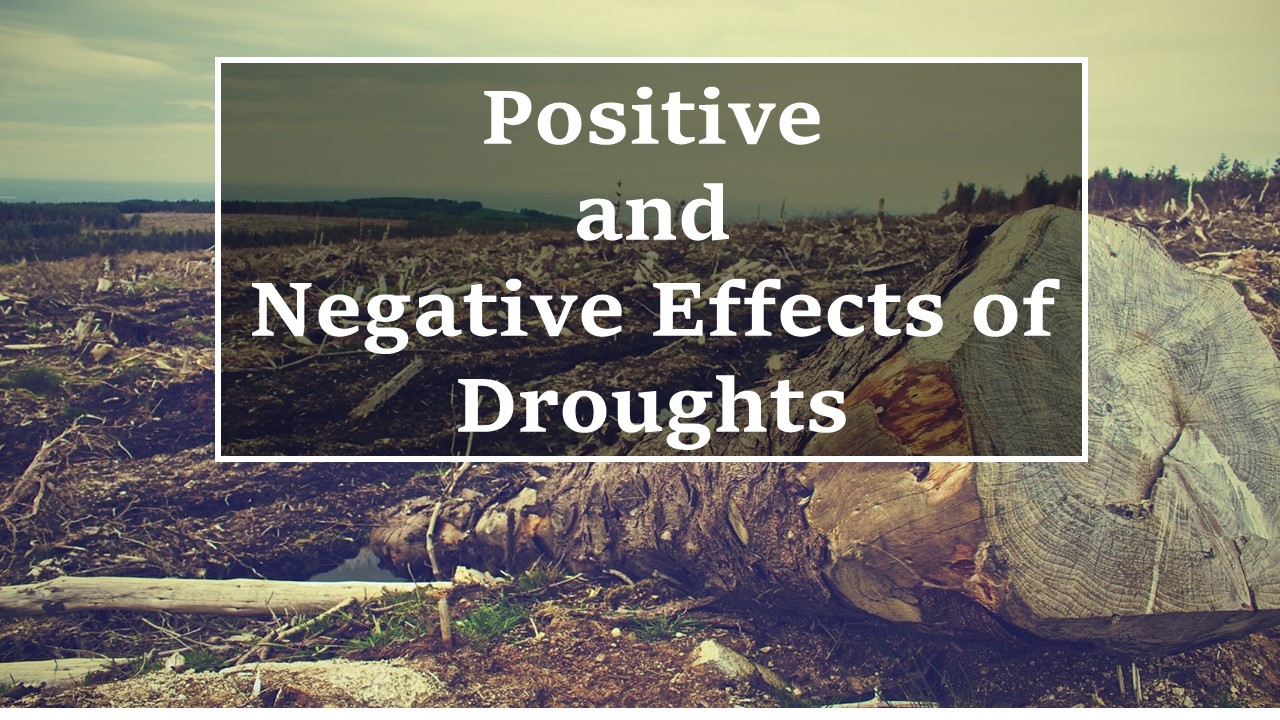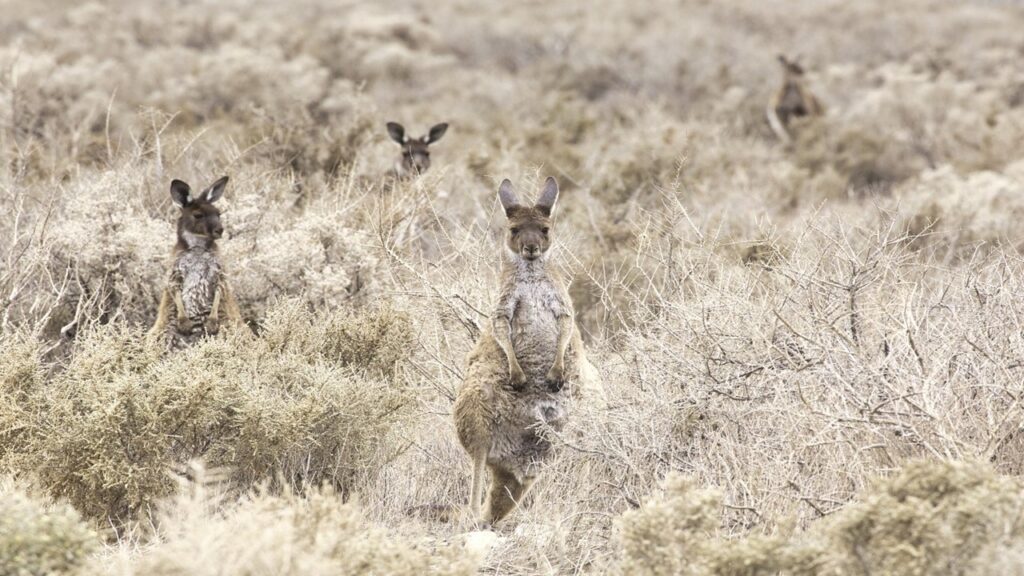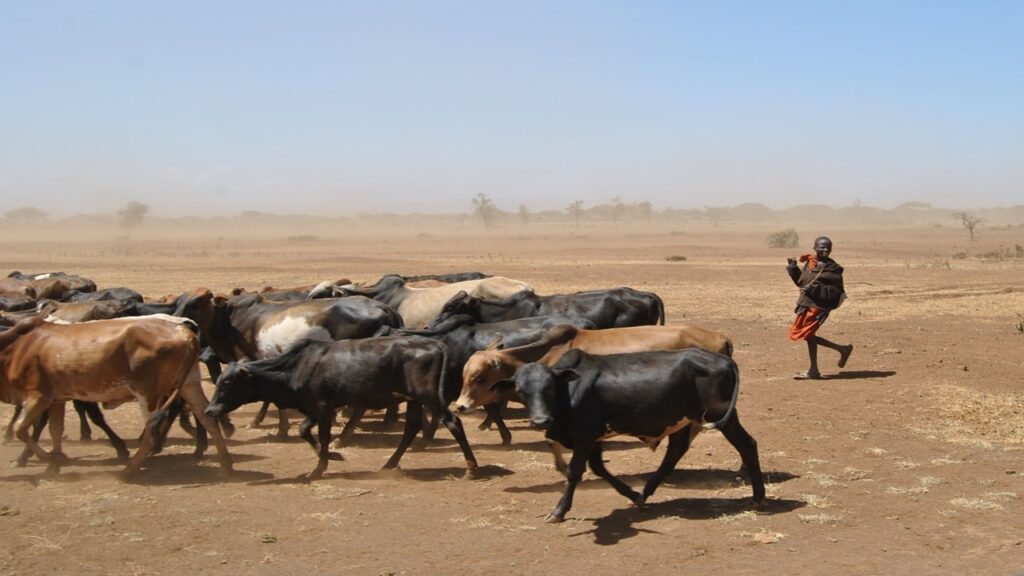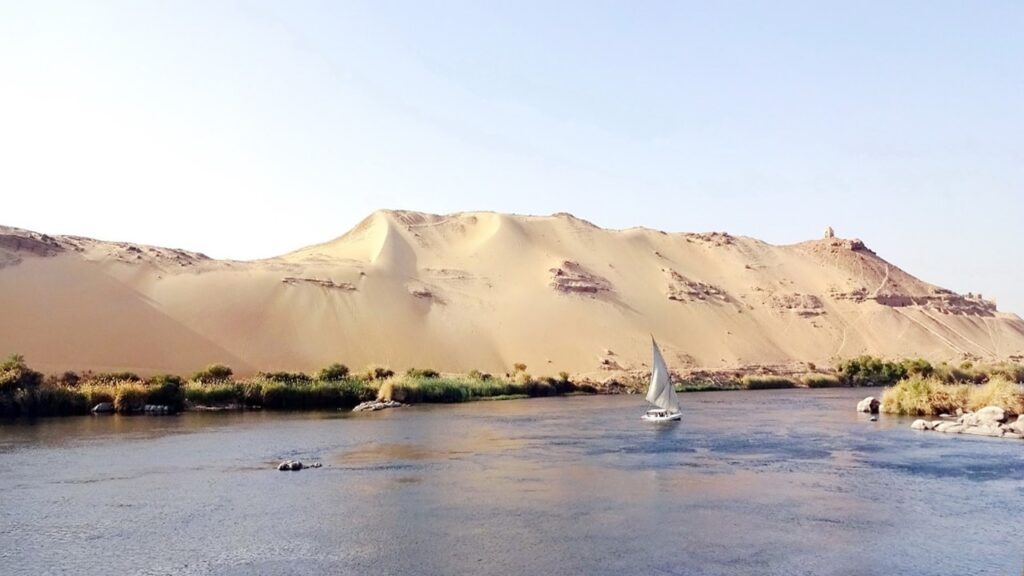Effects of Droughts: Positive, Negative, Examples

Effects of droughts can be both positive and negative.
Of all the natural hazards that occurred in the 20th century, droughts had the worst effects on human populations. Droughts affect around 55 million people globally every year while water scarcity affects 40% of the world’s population.
Drying trend globally
Since 1950, droughts have become more common in many regions of Africa, Asia, America, Europe, and Australia. There is generally a drying trend globally, especially in northern latitudes. Now with changing global climate, droughts could become more widespread around the world.
As droughts typically start unnoticed with effects that accumulate over time, they have significant impacts on lives and properties. In the United States, for instance, droughts are the second most costly weather disaster after tropical cyclones. But at the same time, they can be beneficial as well.
Positive effects of droughts
1. Balance the health of wetlands
Wetlands are typically one of the most diverse and productive ecosystems on Earth. They include salt marshes, estuaries, mangroves, etc. Various plants grow in wetlands as well as animals like ducks and waterfowls. The system is dynamic in nature thus allowing a plethora of creatures to thrive in it.
Too much water hinders the productivity of wetlands
However, too much water in wetlands can hinder the productivity of the system. For example, bottom sediment becomes too soft thus preventing plants from rooting properly. The level of oxygen also decreases as bacteria decompose dead animals and plants.
Therefore, droughts help to rebalance the health of wetlands. As water evaporates, nutrients remain behind. They enrich the sediment hence permitting new plants to develop and grow.
2. Droughts allow certain species to grow
Also, as a matter of fact, long periods of droughts allow certain plants and animals to survive. While a sunflower may dry up and die when there is a lack of water, chaparral shrubs have evergreen leaves.
This is because certain species have special characteristics to withstand long, dry periods. Kangaroos for example live in burrows that are neither too hot nor cold during the day. They feed outside at night when it is cooler. Peanuts also resist droughts allowing them to grow in the short wet season of the northern savanna zone of West Africa.
So, where droughts persist for long periods of time, some plant and animal species can colonize the dry regions and grow.

3. Raise awareness on water saving
Though water covers 75% of planet Earth, only 2.5% is fresh water that we can consume. What’s more, approximately two-thirds of the world’s population live in areas with limited access to freshwater. As the population increases, there will be even greater demand for water to produce food and energy.
Right now, the average American, Irish and British use up to 568 liters of water per day. Or almost two full bathtubs of water per individual each day. As the climate continues to change, droughts will become more common worldwide.
10-year drought in Canberra, Australia lessons
In line with this, droughts raise awareness on water saving. For example, the drastic drought in Canberra, Australia in 1997 made people use the small amount of water they had. Adults used buckets to save water during showers to clean floors and water pot plants. Children bathed together and gardens fended for themselves. After a 10-year drought, the community learned to save water and stop wasteful uses.
4. Encourage water recycling
Water recycling or water reuse is when we treat used water for purposes other than drinking. In fact, water recycling is an important adaptation measure to save water with climate change.
So, basically, instead of throwing away water from baths and sinks, we collect it. We refer to this type of water as greywater. Then we treat it to remove contaminants and sometimes to kill microorganisms.
Finally, we can use the treated water to wash cars, do laundry, and water gardens. In industries and greenhouses, we can use greywater as temperature control.
Water recycling in Spain
As a sustainable approach, more and more nations are using greywater. In Spain for instance, summers are quite dry and hot with occasional droughts. So communities are already recycling water in many regions, or a total of 1200 m3 per year.
Negative effects of droughts
Generally, the effects of droughts can be short-term and long-term.
In the short term, water and moisture levels in the ground decrease. The soil then dries up and plants die.
Over longer periods of time, water becomes scarce both for humans and animals. Erosion and rainfall remove the loose topsoil often leading to desertification.
Insects and plant-eating fungi also proliferate during drought conditions like locust outbreaks in Africa. Very often, droughts also increase the occurrence of wildfires and their intensity.
1. Affect agriculture and food production
One of the most significant effects of droughts is that it affects agriculture and subsequently food production. In several regions around the world especially in sub-Saharan Africa, 95% of agriculture depends on green water. Green water is moisture that the soil retains following rainfall. As temperatures continue to rise, even green water is disappearing.
Crop failures and livestock deaths
In the last 100 years, Kenya alone recorded 28 droughts, with 3 occurring in the last decade. It resulted in massive crop failures and livestock deaths triggering severe food shortages. Likewise, humanitarian help has tripled in Ethiopia since 2015 due to severe droughts exacerbated by El Nino events. Successive harvest failures and the death of livestock sharply raised malnutrition levels with 10.2 million people requiring humanitarian assistance.

2. Social effects of droughts
As water becomes scarce, it also leads to anxiety and unrest in the general population. Water prices increase thereby widening the disparity between the rich and poor as only the wealthy can afford it.
There can even be local conflicts between water users to regional conflicts where nations share watersheds. Such an example is the conflict between Egyptians and Ethiopians over the Nile Basin water.
Migration
Prolonged droughts can cause communities to migrate to other places as well. For example, the drought episode that hit India in 2019 led to mass migration from villages with up to 90% of the Maharashtra population fleeing. Migrants can thus increase pressure on resources where they move to. Or communities, where they move from, can lose important human resources.

3. Health impacts
Since droughts affect food production, it leads to malnutrition. This is especially the case in the Horn of Africa where droughts exacerbate a large-scale nutrition crisis. Children and adults alike suffer from hunger and malnutrition due to harvest failures and the death of livestock.
At the same time, crops and meat that are available are less nutritious resulting in micronutrient deficiency in populations. In 2017, droughts and conflicts in South Sudan, Somalia, Yemen, and north-east Nigeria resulted in 22 million hungry and sick children.
Droughts increase the risk of diseases
Additionally, droughts increase the risk of infectious diseases like pneumonia, diarrhea, and cholera. It is basically due to a lack of sanitation, water itself, displacement, and acute malnutrition.
If droughts encourage wildfires, dust and smoke can significantly affect the air quality. So, it can worsen the health of those suffering from respiratory diseases like asthma or from heart diseases.
4. Economic losses due to droughts
All in all, droughts inevitably lead to severe economic losses. In the United States as an example, each drought costs the government around $9.5 billion. Between 1984-2017, droughts cost China about $7 billion per year while the 2003 drought in 20 European countries totaled $15 billion.
Generally, droughts affect businesses that depend on water like agriculture, tourism, and food/energy production. People working in these sectors can eventually lose their jobs leading to the accumulation of debts. Likewise, the price of water may also rise as it becomes scarce. Hydropower production can also go down thus raising the price of energy.

This is nice